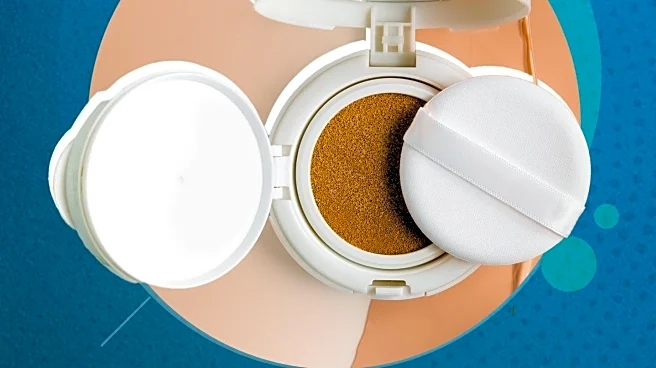What's Happening?
The global self-urinary infection testing market is experiencing significant growth, with projections indicating it will reach USD 21.9 billion by 2035, up from USD 10.3 billion in 2025. This growth is driven by a compound annual growth rate (CAGR) of 7.8%, reflecting increased demand for convenient and accessible diagnostic solutions for urinary tract infections (UTIs) and related kidney complications. The market is seeing a surge in the adoption of home-based testing kits, which offer immediate results without the need for hospital visits. Dipsticks, which are affordable and easy to use, dominate the market, accounting for 48.6% of revenue in 2025. These kits are favored for their ability to detect multiple indicators such as leukocytes and nitrites, making them popular among both clinical professionals and home users.
Why It's Important?
The expansion of the self-urinary infection testing market is significant for several reasons. It highlights a shift towards patient-centered healthcare, where individuals can monitor their health proactively, reducing the burden on healthcare facilities. This trend is particularly important in the context of rising prevalence of UTIs and nephropathic disorders, which are exacerbated by lifestyle-related conditions such as diabetes and obesity. The market's growth also underscores the increasing importance of early detection and preventive care, which can help mitigate severe kidney damage and other complications. Additionally, the integration of mobile health applications and digital connectivity into testing solutions is democratizing access to reliable diagnostic tools, aligning with the broader trend towards decentralized healthcare.
What's Next?
The market is expected to continue expanding, driven by technological advancements and increasing consumer demand for preventive healthcare solutions. Innovations such as smartphone-based urine tests, which allow patients to monitor their urinary health conveniently, are likely to gain traction. The integration of AI and data analytics into self-testing platforms is anticipated to enhance clinical applications, enabling predictive diagnostics and personalized treatment recommendations. As the market grows, manufacturers are likely to focus on product innovation, mobile integration, and partnerships with healthcare providers to expand their footprint. Regulatory guidance and standards for self-diagnostics are evolving, and companies investing in compliant and reliable technologies are expected to benefit in the long term.
Beyond the Headlines
The growth of the self-urinary infection testing market also raises important ethical and regulatory considerations. Ensuring the accuracy and reliability of self-testing kits is critical to maintaining consumer trust. Additionally, the variability in adoption across different regions and the need for regulatory approvals pose challenges for manufacturers. The market's expansion also highlights the potential for increased competition from professional diagnostic services, which may impact the landscape. However, the ongoing trend of home-based healthcare and telemedicine is expected to reinforce adoption, particularly among tech-savvy and elderly populations.










